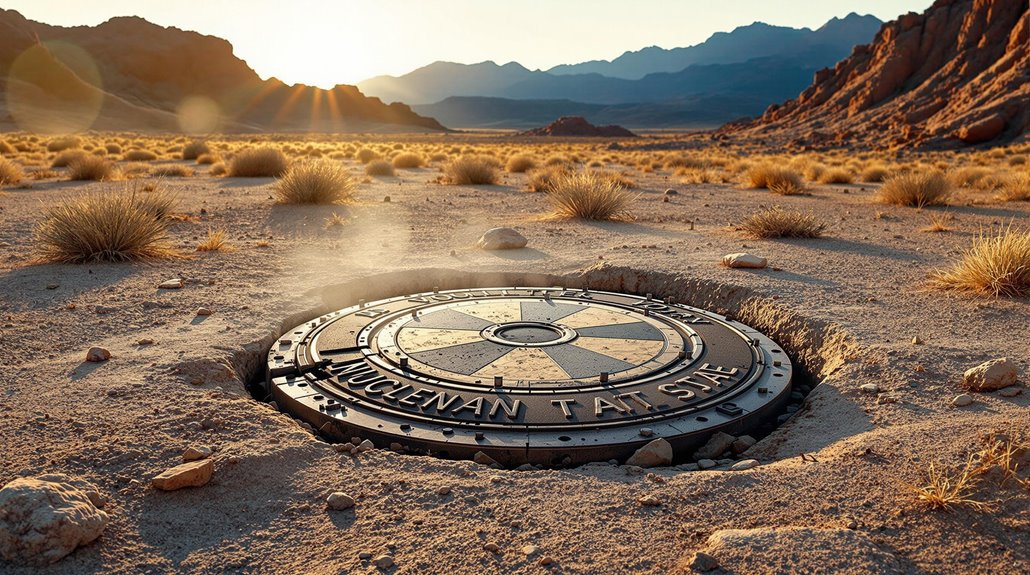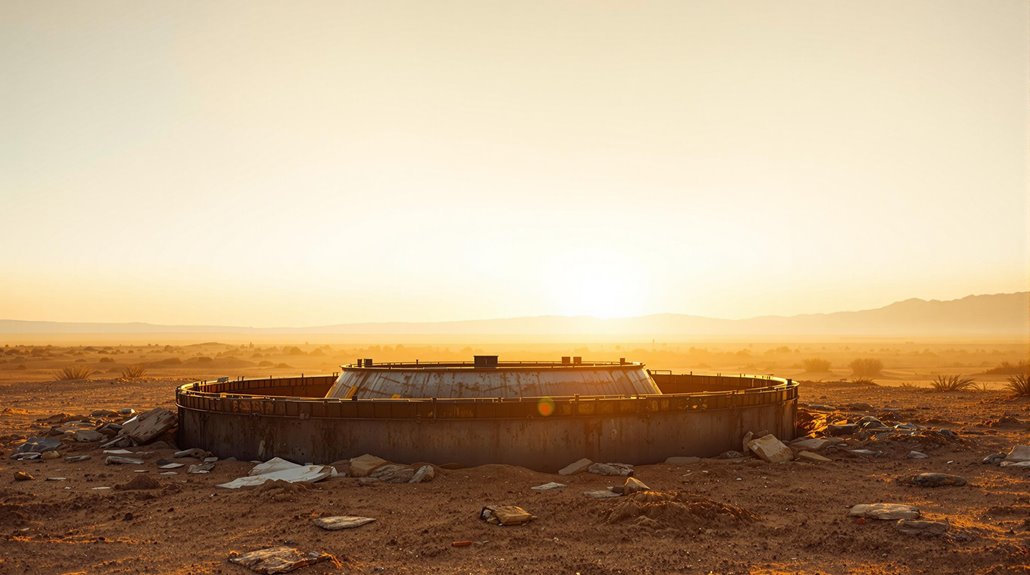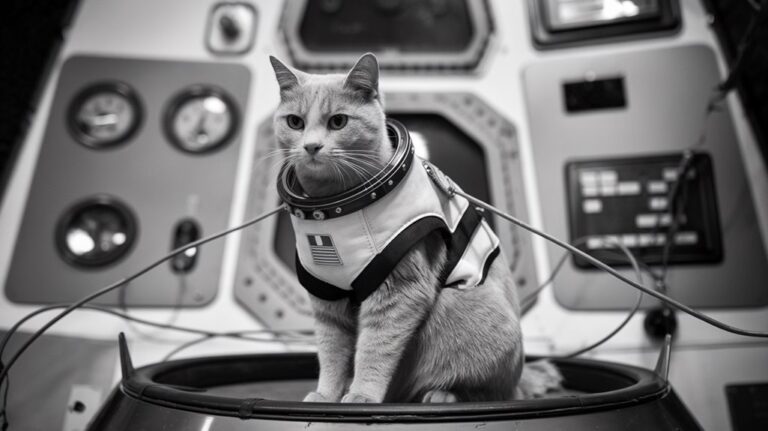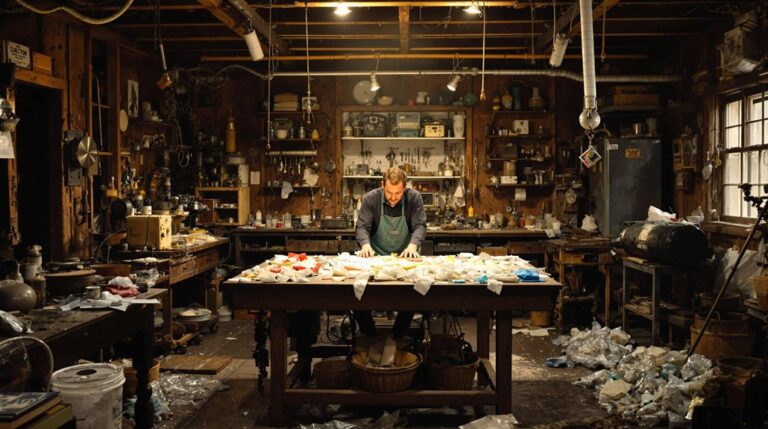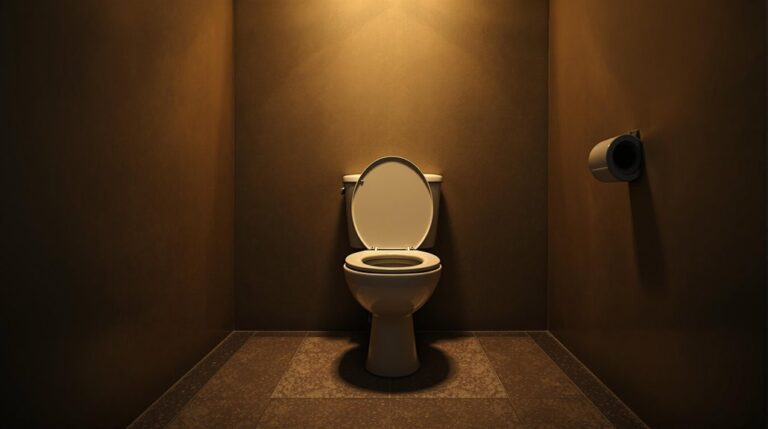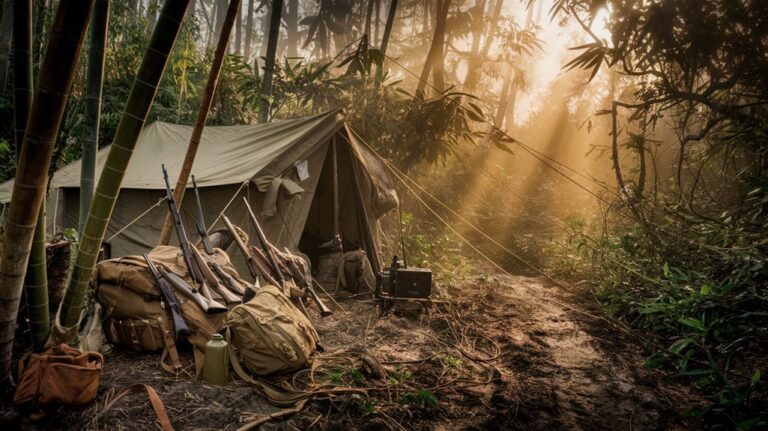A Nuclear Manhole Cover: Did It Beat Sputnik?
You've probably heard of Sputnik 1 as humanity's first object in space, but there's a peculiar challenger to that claim: a humble manhole cover. In 1957, months before the Soviet satellite made history, a nuclear test in Nevada might have accidentally launched this steel disk at mind-bending speeds of 125,000 mph. It's a story that merges Cold War weapons testing with accidental space exploration, raising questions about what truly counts as our first venture beyond Earth's atmosphere.
The Accidental Space Race Contender
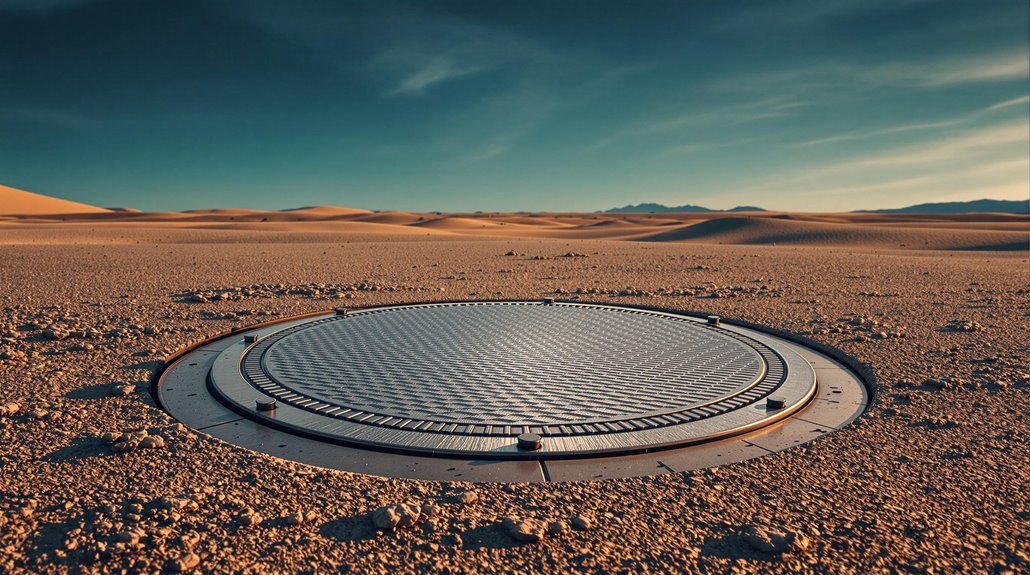
While the Space Race officially began with Sputnik's launch in 1957, America may have accidentally sent the first human-made object into space months earlier through an underground nuclear test.
During Operation Plumbbob's Pascal-B test, a 900-pound steel cap covering a 400-foot borehole was blasted upward at an astonishing nuclear velocity of 125,000 mph – about five times Earth's escape velocity and seven times faster than Sputnik would travel months later.
You might wonder what happened to this accidental space pioneer. Scientists remain skeptical about whether the cap actually reached space, as atmospheric friction likely vaporized it during its journey.
The test was part of a larger series focused on containing nuclear fallout through underground detonations. The experiment, led by Dr. Robert Brownlee, marked a significant milestone as the first-ever underground nuclear test.
With only a single frame of high-speed footage and no tracking data available, this peculiar incident remains more of a fascinating "what if" than a confirmed historical milestone.
Operation Plumbbob's Unexpected Launch
The story of America's accidental space pioneer emerged from a much larger nuclear testing initiative – Operation Plumbbob. In 1957, this massive undertaking involved 29 nuclear tests and brought together 21 different laboratories and government agencies at the Nevada Test Site. The test series was part of an extensive nuclear program that saw the US detonate 1,054 nuclear bombs between 1945 and 1992.
Among Operation Plumbbob's unexpected discoveries was the startling power of underground nuclear test implications. The Pascal-A test produced a yield 50,000 times greater than scientists anticipated, creating a towering jet of fire. The test would prove pivotal as it became America's first underground shaft test, setting new protocols for future nuclear experiments.
This led to Pascal-B's famous experiment, where a 900-kilogram iron lid was welded over a 500-foot shaft containing a nuclear device. You'd think they'd learned from Pascal-A, but the explosion's force sent the lid flying so fast it appeared in just one frame of high-speed footage, potentially making it Earth's first object to reach space.
Breaking Down the Physics
Understanding how a manhole cover might've become Earth's first accidental spacecraft requires diving into some mind-bending physics.
When you break down the velocity calculations, you'll find the steel disc reached an astonishing 125,000 mph – five times Earth's escape velocity – in less than a millisecond.
The intense nuclear blast vaporized the concrete beneath the cover, creating extreme atmospheric pressures that launched the half-ton disc skyward.
As it shot through the atmosphere, the 4-inch thick steel likely deformed into a bullet shape, potentially helping it pierce the air more effectively.
Initial experiments using copper plates produced bullet-shaped remnants during testing.
While the cover faced hypersonic speeds and extreme forces, its brief atmospheric transit time of less than a second might've prevented complete disintegration.
The part of Operation Plumbbob that launched this unusual projectile was originally designed to be a nuclear safety experiment.
The debate continues over whether it survived to reach space.
The Great Space Debate: Cover vs. Satellite
In space exploration's early days, two unlikely competitors emerged in the race to breach Earth's atmosphere: a humble manhole cover and Sputnik 1.
While the Soviet satellite's October 1957 launch officially marked humanity's first venture into space, you might be surprised to learn about its potential predecessor.
The Pascal-B nuclear test in August 1957 may have inadvertently created history when it launched a manhole cover at an estimated speed of 60 km/s.
A high-speed camera captured just one single frame of the speeding cover before it vanished completely.
This unlikely satellite rivalry has sparked decades of debate among scientists and space enthusiasts.
Though Sputnik earned its place in history books with documented orbits and radio transmissions, the manhole cover's fate remains a mystery.
The cover's incredible velocity suggests it could have reached space months before Sputnik, but without tracking data, we can't confirm if it survived the journey or vaporized in the atmosphere.
While Sputnik proved its success by emitting two radio frequencies that allowed scientists to track its movement, the manhole cover left no traceable signal of its existence in space.
Scientific Legacy and Historical Impact
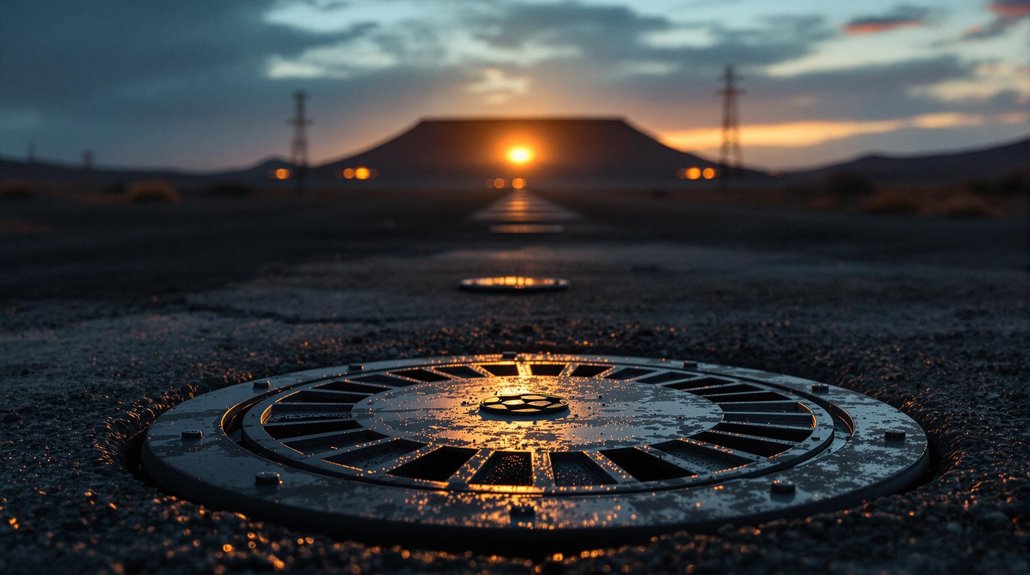
While Pascal-B's flying manhole cover might seem like a quirky footnote in nuclear testing history, this experiment's scientific legacy extends far beyond its unusual projectile.
You'll find its influence in numerous scientific advancements, from improved high-speed photography techniques to revolutionary methods for containing nuclear blasts underground.
The test's nuclear innovation sparked essential developments in radiation containment and seismic detection, leading to safer testing practices worldwide. The experiment with a massive concrete plug significantly advanced scientists' understanding of blast containment methods. By helping scientists understand blast effects and nuclear propulsion concepts, Pascal-B contributed to both military strategy and civilian research.
Its timing, just months before Sputnik 1, places it at a pivotal moment in Cold War history. The experiment's data also informed future nuclear test ban treaties and shaped public discourse about atomic testing, making it a significant milestone in nuclear research development.

